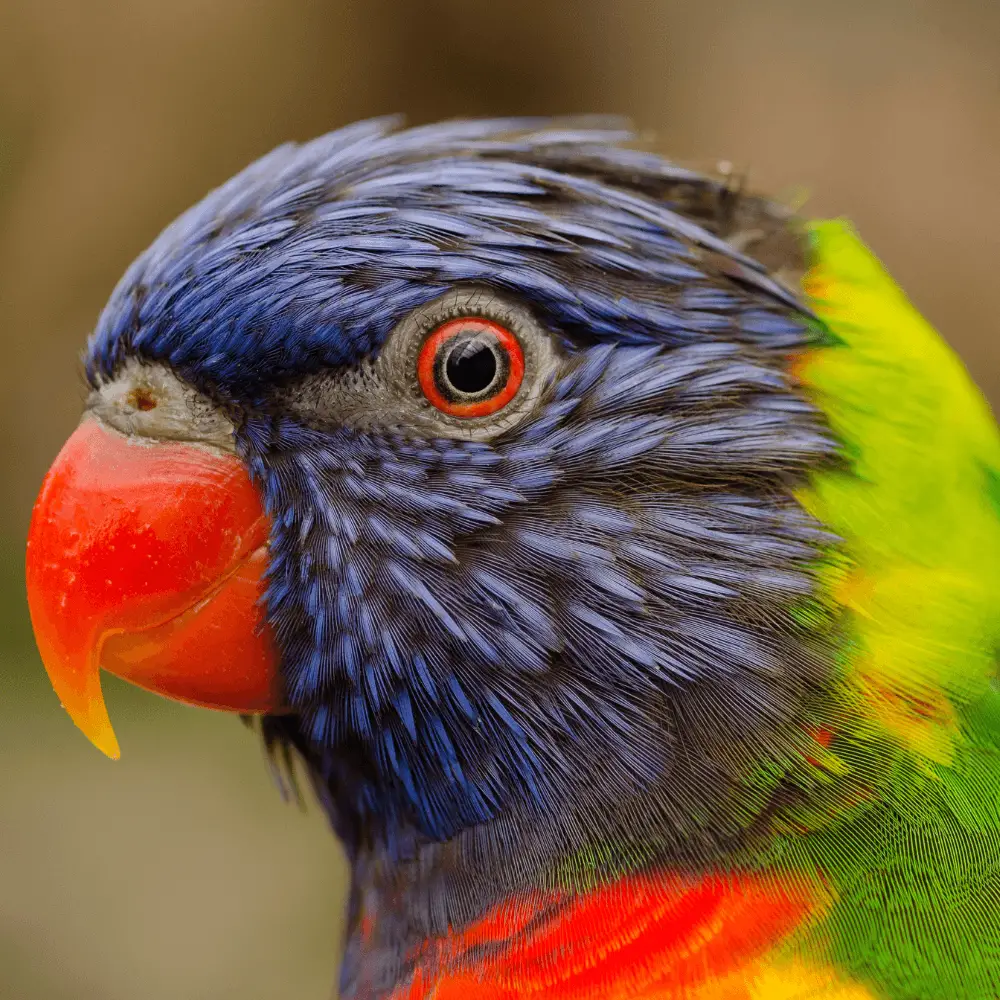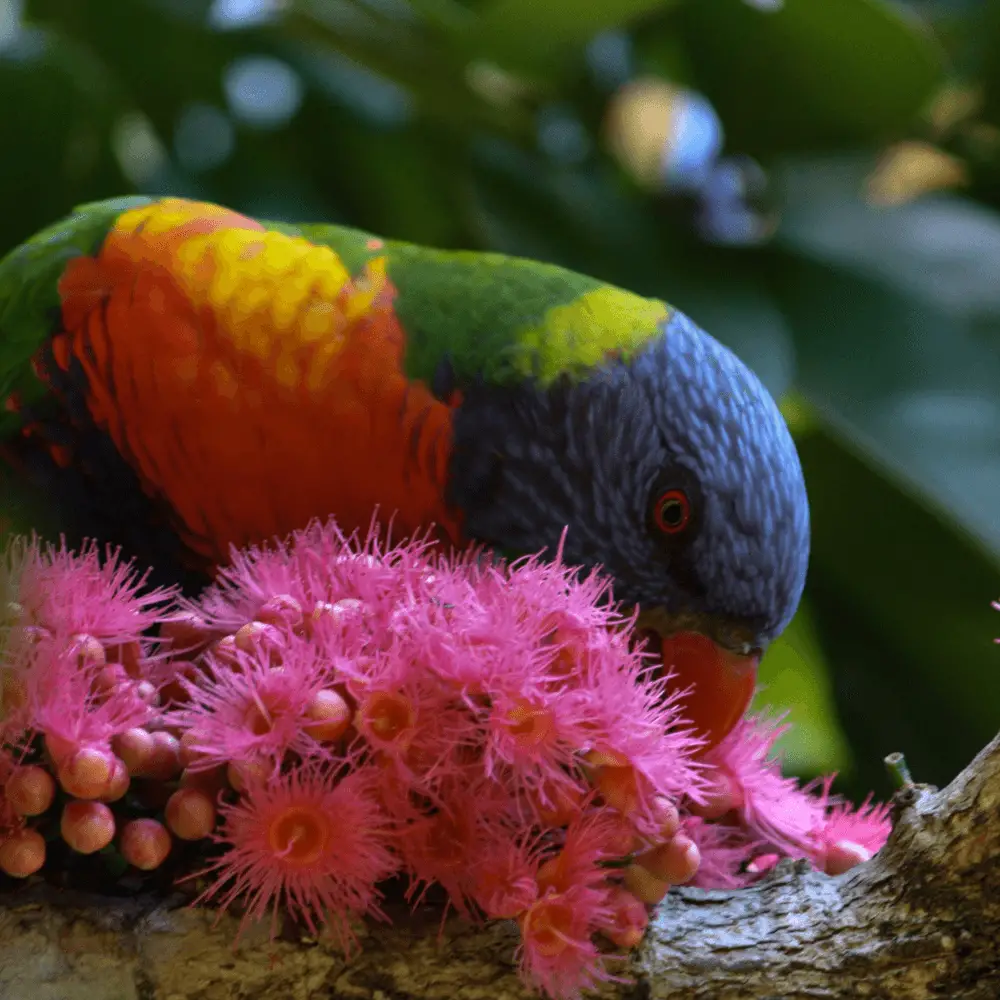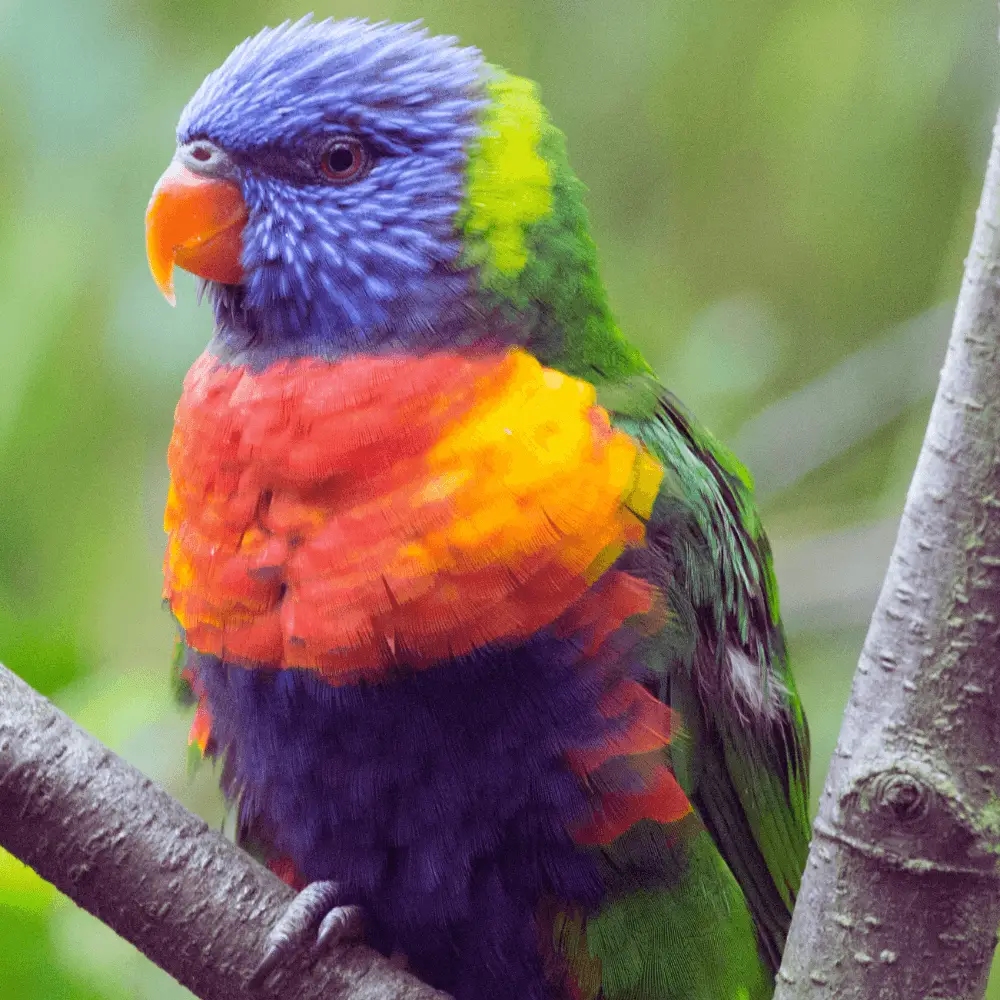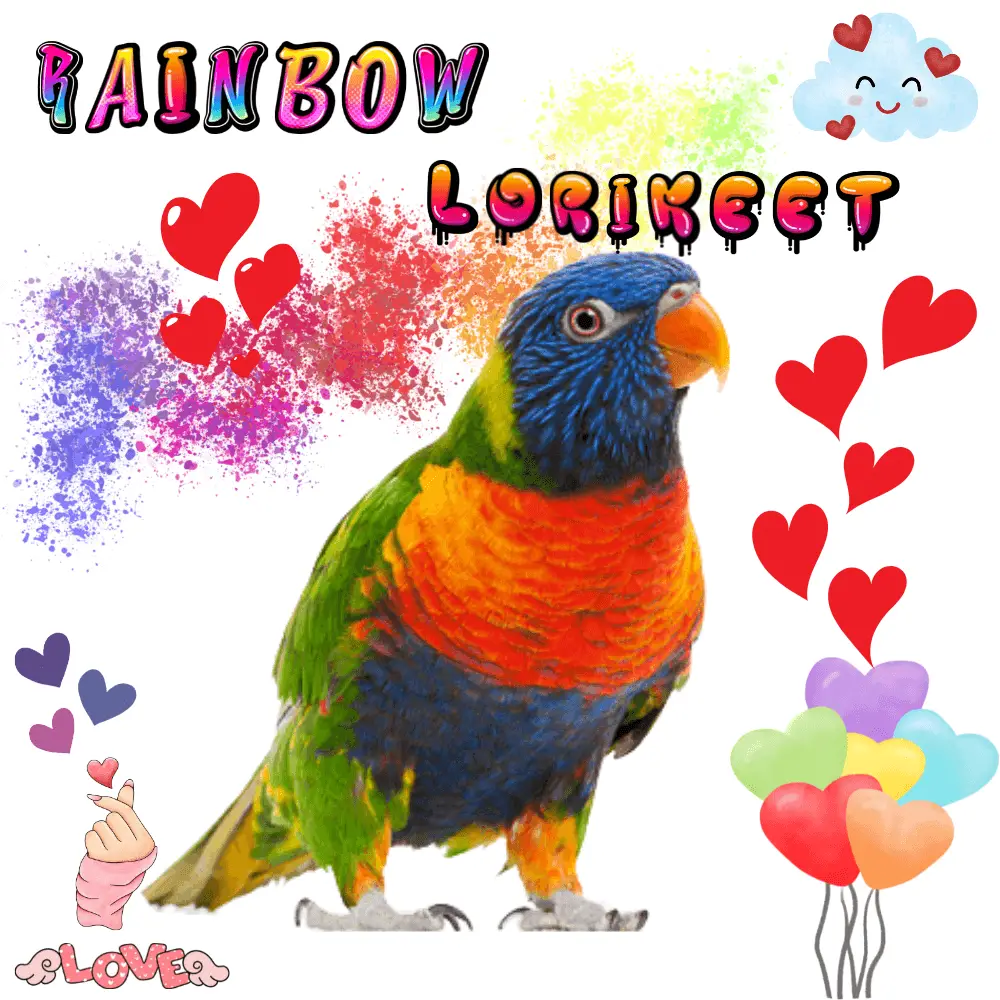Rainbow Lorikeet: is one of the most colorful parrots, and it is native to Australia, and its moral characteristics differ slightly from other parrots. These parrots, like lovebirds and cockatiels, are very active and fun parros.
Their voice mimics are good, and only two species of lory parrots, the Red Lory and the Yellow Backed Lory have little talent for imitating human voices. Among other loris breeds, we can mention the purple-bellied loris, Papuan loris, white-necked loris, black-headed loris, etc.
- Lories are between 15 and 38 cm long
- Its weight ranges from 20 to 280 grams
Rainbow Lorikeet personality

Lorikeet’s personality is generally very enthusiastic and this parrot is not shy at all. Lories, also called parrot lories, are a prominent group among parrots.
It is one of the most colorful parrot species known for its brush-like tongue. In fact, this property is very unique and allows it to remove pollen and nectar from flower blossoms.
Given that nectar is a major part of their diet, it is not surprising that the birds are active birds. As mentioned, the lory is native to Australia and is abundant in this region.
Rainbow Lorikeet Species
- Lori surrounded by red
- rainbow Lori
- Papuan lorikeet
- Ornate Laurie
- Olive-headed lorikeet
- Lori Mask Lorikeet
- Mindanao Lorikeet
- Laurie Goldy
- Lori Dusky
- Lori the talkative
- Brown lory
- Blue striped lory
- black lori
Rainbow Lorikeet food

The rainbow grouse consumes a mostly liquid diet. This means that they have a mostly liquid tube and love to shoot long distances!
Rainbow finches are active birds that need a spacious cage as well as plenty of outside playtimes. Basically, lorises have a very special diet, based on fruit and nectar.
They will also crack some of the seeds, but it should be noted that the consumption of seeds should not be excessive in the food of the parrot lory.
Because seeds are not normal in their wild diet, which mainly consists of flowers, nectar, pollen, and insects.
If you have lories, you can feed them worms, which are usually available at pet stores. Due to this special diet, which consists mainly of nectar and perishable fruits, malnutrition, and illness in lories are also normal, but you, as a bird owner, should not be neglectful in feeding this beautiful parrot.
Also, remember that red trucks can live more than 30 years if they are cared for properly.
Rainbow Lorikeet health
Because the lorises’ diet consists of nectar and highly perishable fruit, bacterial infections associated with food spoilage are a health concern for the lorises.
Lori’s liquid food must be changed and refilled often, especially in hot weather when bacteria-rich food becomes contaminated quickly.
If the fruit is left in the cage even for a few hours, it will rot, which can cause infection and even general poisoning of the produce.
The rainbow lorikeet is also susceptible to hemochromatosis, or iron storage disease;
A metabolic disorder causes a large amount of iron to accumulate in the tissues of the lori’s body and may be fatal for this bird. Hemochromatosis in lorries may be due to a genetic disease or an improper diet.
Consult your avian vet for guidance on the best diet for your parakeet.
Rainbow Lorikeet lifespan

The rainbow lorikeet can live from 20 to 30 years, provided it is well taken care of. There is also a common myth that loons do not need water, which we have to say is false and loons need water like other parrots.
Rainbow lorikeet initially has short beaks, and since they are not very fond of chewing wood, etc., and feed on soft foods, after a long period of time, their beaks will become very long.
When they are young, their plumage is cloudy, and when they are young, their feathers become translucent.
Rainbow lorikeets are lively, busy, active birds and have the most beautiful coloring among parrots. Their living area is Australia, New Guinea, and the eastern islands from Sunda to Sulawesi (Klebis) and Philippine Islands (Mindanao). Many types of them can be seen in the east
A total of 55 species of loris are known. They are 18 to 23 cm long, depending on their species.
Some species are known to be only 13 cm long, but this group has received less attention. The longest lory, up to 42 cm long, with its tail making up the majority of its body length.
Rainbow lorikeet talking
If they have a lot of contact with their guard, they will get used to it and learn to talk. Other types of Lepidoptera rarely have the gift of speaking, and their natural voice is a continuous whistle.
SOURCE: African Grey Parrot Pet
Rainbow lorikeet price

The prices of the Lori parrot range from 500 to 1000 dollars
Is a lorikeet a parrot?
Vans are lively, busy, active birds and have the most beautiful colors of their home parrots. It consists of Australia – New Guinea – Eastern Sunda Islands to Sulawesi and the Philippines. In all, about 55 species of loris are known.
They are 18-23 cm long, depending on their species. The lorises feed on fruits, semi-ripe seeds, and flower sap.
They are able to suck flower sap with the help of their hairy tongue. And keeping them more difficult because of their own food which is from other species.
The tallest Babu Valori lori is 42 cm long and its head is the main part of its body, and the smallest is 13 cm long.
Are lorikeets friendly?
There is a lot of excitement in the lory and it is considered one of the liveliest birds around. These birds are constantly busy and noisy and need a little time to rest.
Their antics are great fun for most people, but they can also be a bit annoying to someone who is used to a quieter companion. Playtime is very important to Laurie.
Of course, a rainbow lorikeet can have fun outside of its cage when it has a guardian.
In fact, when left alone, rainbow lorikeet Rangin suffers from behavioral disturbances and may begin to self-harm.
Therefore, you should alert the birder to watch Laurie when she is out of the cage.
Because this energetic bird tends to be vicious and destructive and gets into trouble faster than anyone can get him out of harm’s way!
Because this bird is very excitable and intelligent, it often has a sharp beak and usually bites only out of excitement or fear.
So, there’s even a kind called lory chatter in it! Lorikeets can also learn to talk, but they tend to start talking loudly which can attract the attention of nearby neighbors!
How often do you feed a lorikeet?
Loriini feeds on fruits, semi-ripe seeds, and flower sap. They are able to suck flower juice with the help of their hairy tongue.
Soaked bread or egg bread with honey is their vitamin food. Mixed fruit purees, sweet fruits and berries, cooked carrots, cooked rice, and crackers are among the other foods for this bird. black eggs.
Sunflower seeds are low germination and sprout barley seeds can be gradually mixed with other foods.

